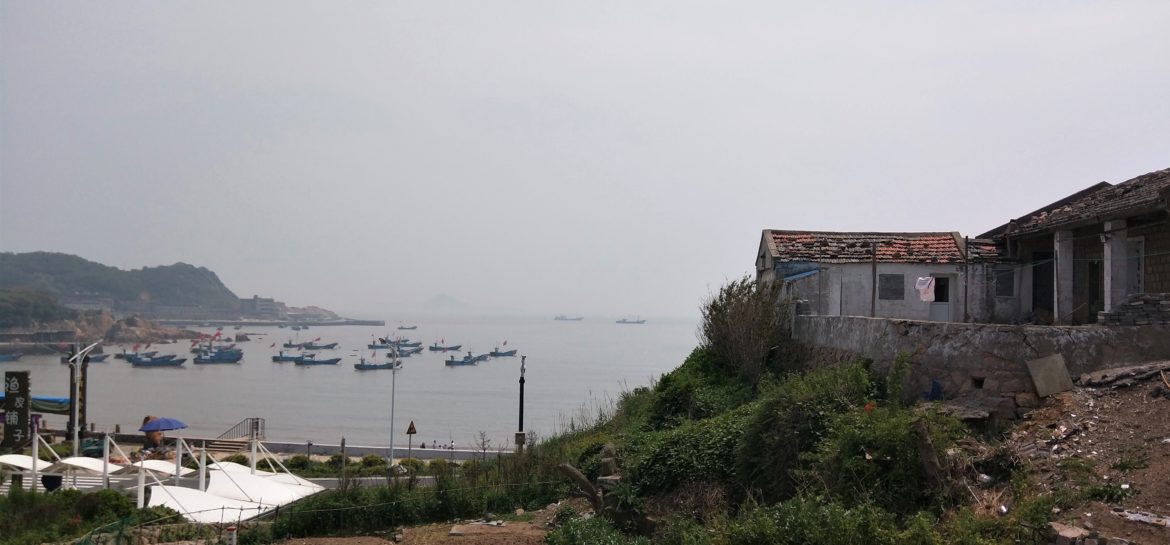
The ocean expanding out across the horizon was a welcome site for us all. After weeks of our daily vista consisting of buildings, crowds, and endless expanses of concrete, a change in scenery was needed. We were also excited to beach-comb along the village shores on Shengsi Island and add yet-to-be-found treasures to our collection of seashells and rocks gathered from our Thailand and Southeast Asia adventures.

Running to the shoreline, we gasped in delight at the shock of the cold water of the East China Sea running over our bare-feet. As the waters receded and our feet sank into the sand, we saw strewn around us not seashells and rocks but pieces of glass, plastic containers, fishing line, and rope. Looking around, we reminded ourselves that this was indeed nature. We could see natural scenery jutting forth in the windswept hills and lush growth of trees bent from years of years of exposure to storms. It was in the breeze and the far-off waves of the sea. I bent down and picked up a piece of worn sea glass. Its edges were smooth and round and reflected turquoise in the sunlight. Just as the glass was a contradiction to the rocks and seashells of our expectations, in many ways so was our island retreat. As often happens when you travel, and with a confounding frequency in China, what we found wasn’t what we expected.
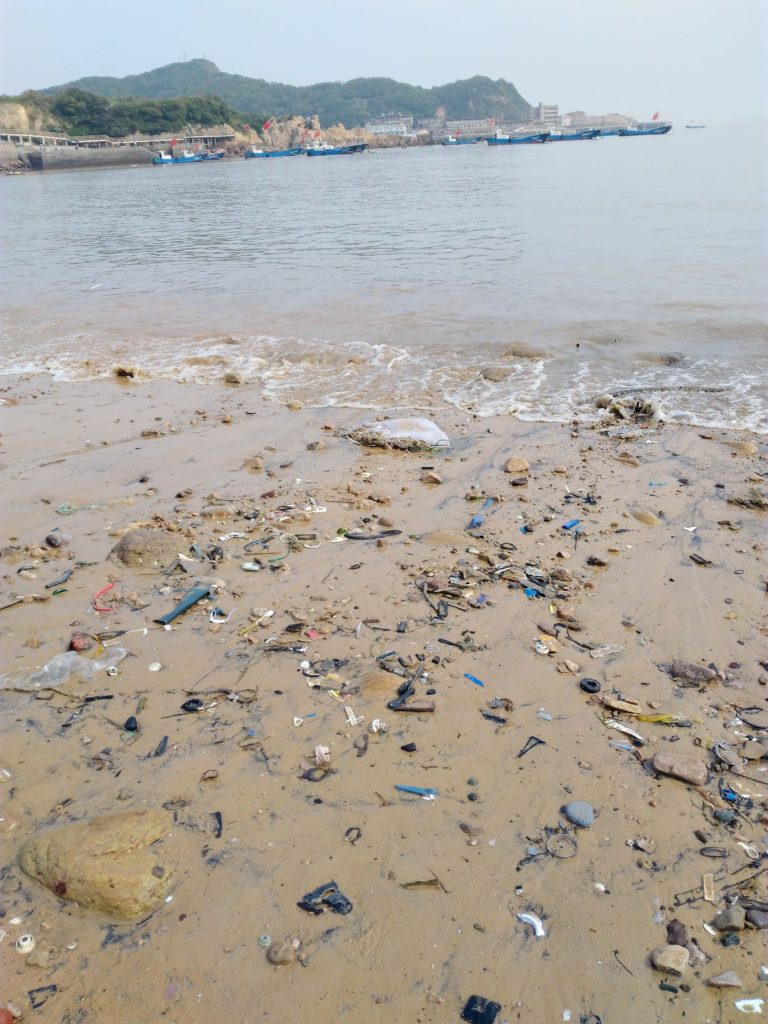
The Shengshi Islands are a group of islands located at the mouth of the Yangtze River where the massive Chinese river meets the East China sea. The area consist of hundreds of islands dotting the seaside, but only few are inhabited and when they are, they are populated mainly by fisherman. The islands are located about 90 miles from the city and can be reached by a combination of bus and ferry.

We expected an island that was two hours away from a city of 25 million people to be crowded on a May Day holiday weekend. What we found was an island with barely anybody there. Prior to our trip, I researched itineraries and blogs and found few references to the island. Figuring this location must not have become part of the foreigner tourist circuit, we headed off for an adventure. Our bus departed from the Nanpu Bridge bus station at 7:30 am. Crossing the East China Sea Bridge (spanning some 20 miles, it is recognized as one of the longest sea bridges in the world) much of the ocean was obscured by low clouds and pollution making it hard to discern the gray sea from the equally gray sky. At the deep-water port of Zhejiang, we saw massive container ships and shipyards equipped to bring goods to and from China’s port city. Boarding a small ferry, we progressed another hour through the open sea to our island destination. Walking off the ferry, we squinted in the sunlight as the other passengers quickly boarded buses and departed, leaving us standing alone on the dock.

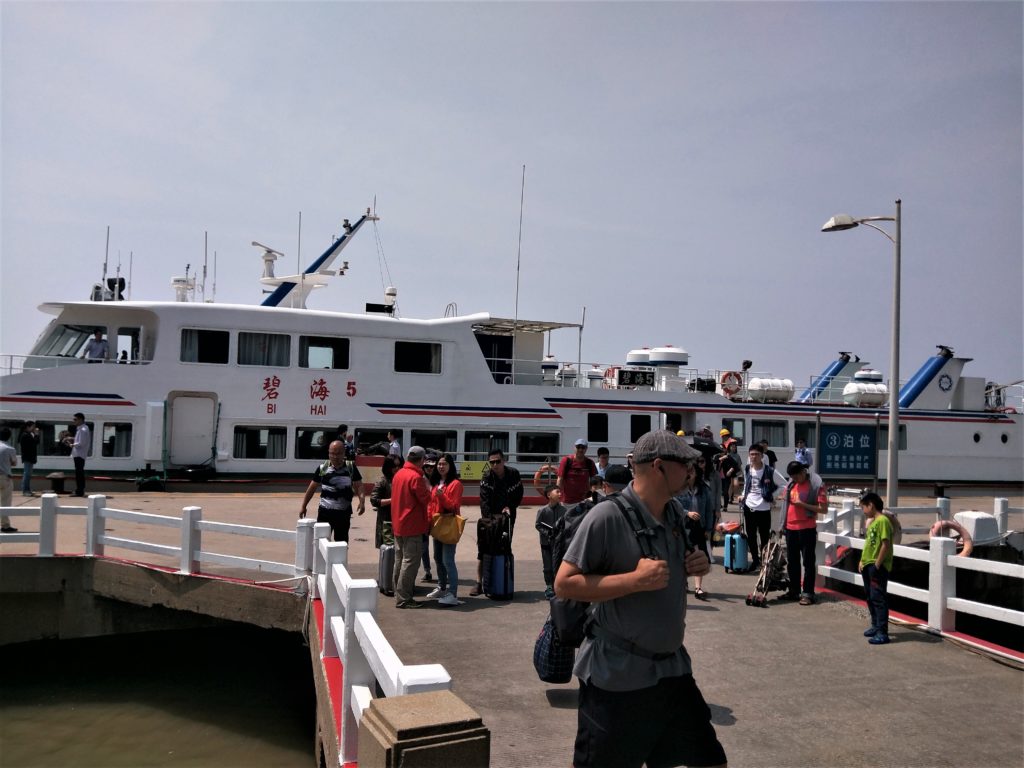
I wasn’t disappointed, this feeling of isolation was just what I had ordered. I was excited that our quest for nature and isolation might pay off in this overnight trip. The drive around the island to our hotel took us past barren hills and valleys, through several seaside towns, and finally next to an old fishing village where our guest house looked out over the bay. Checking in to the guesthouse (a type of local bed and breakfast hotel) we noticed we were the only guests. Standing in the lobby/living room, we smiled at the owner’s daughter sleeping on the couch next to her grandmother who was preparing for lunch.
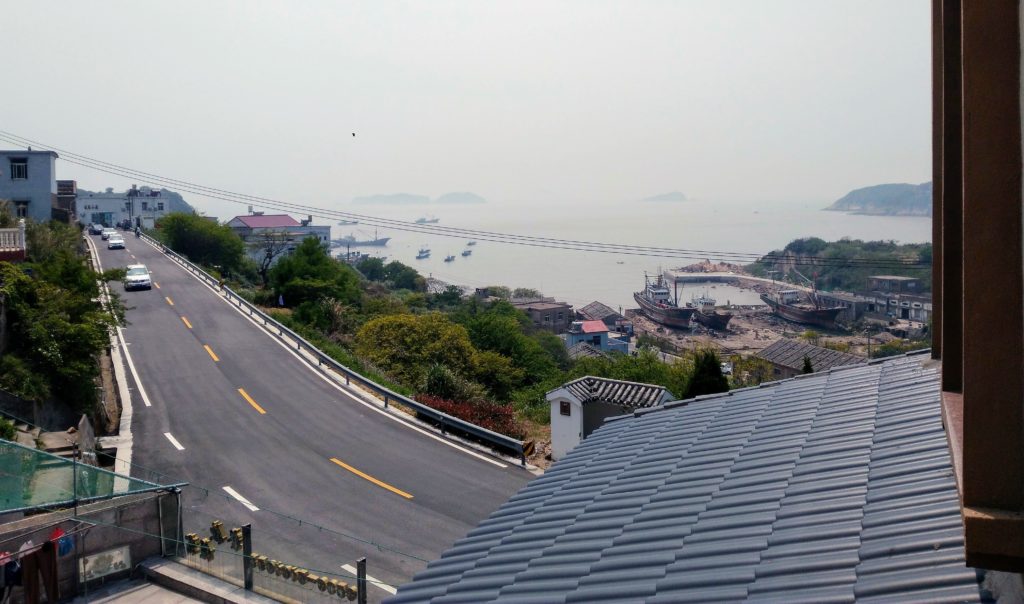
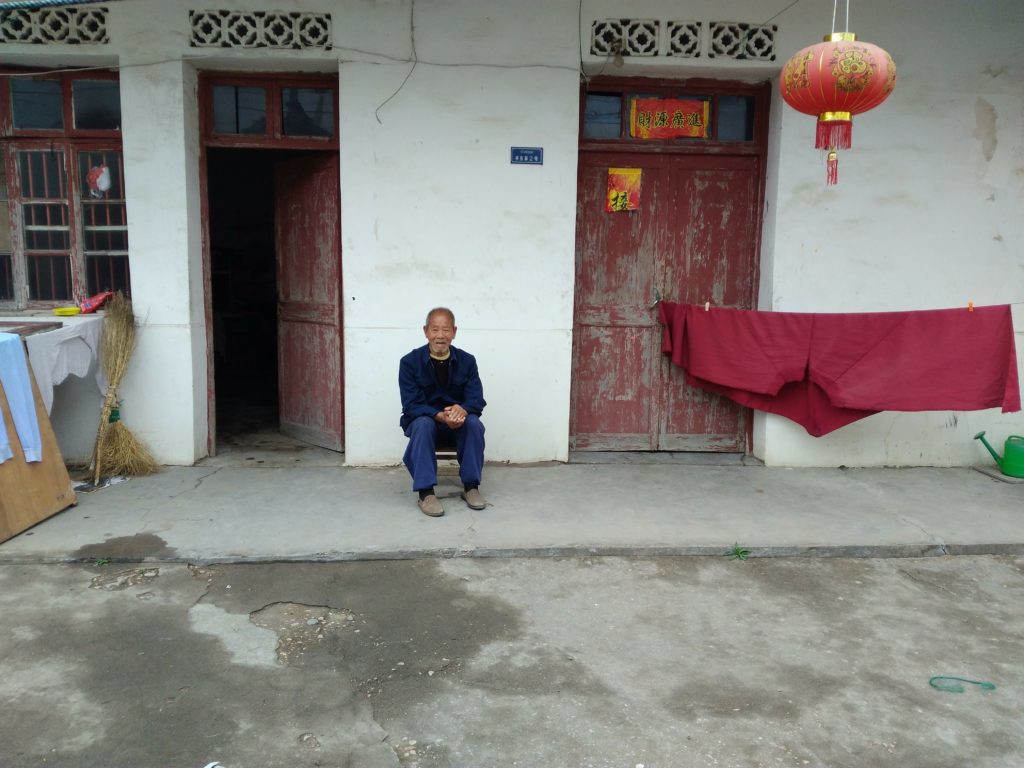
We expected the old fishing village to be, well, old. But everywhere the old and the new were blending together. We decided to explore the local village near our guesthouse. Walking down towards the seaside, we passed by numerous homes under construction. Bamboo scaffolding covered homes and the old village walls were painted over with brightly colored murals.

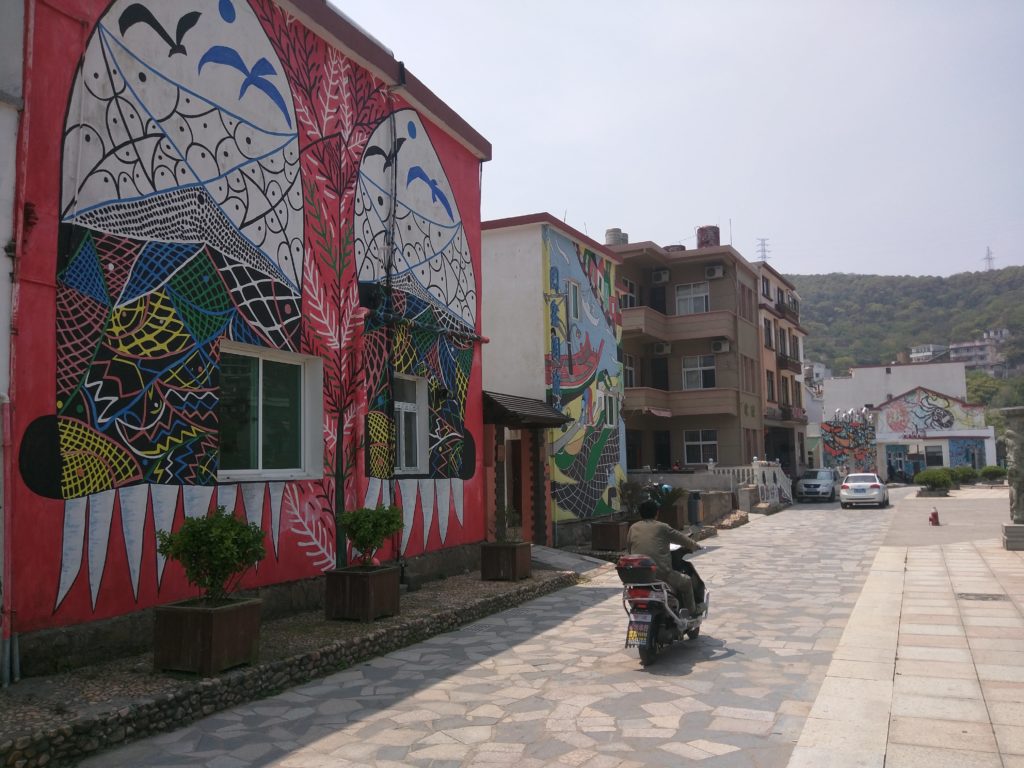
Gardens were being crafted among the construction waste. Several ladies were busy taking portraits and selfies of themselves in various poses among the greenery. A couple sat in the covered pavilion looking at their cellphones, not talking to each other. At the beach, nobody was swimming and most people had shoes on and were fully covered up and carried umbrellas to shield the hazy sun.
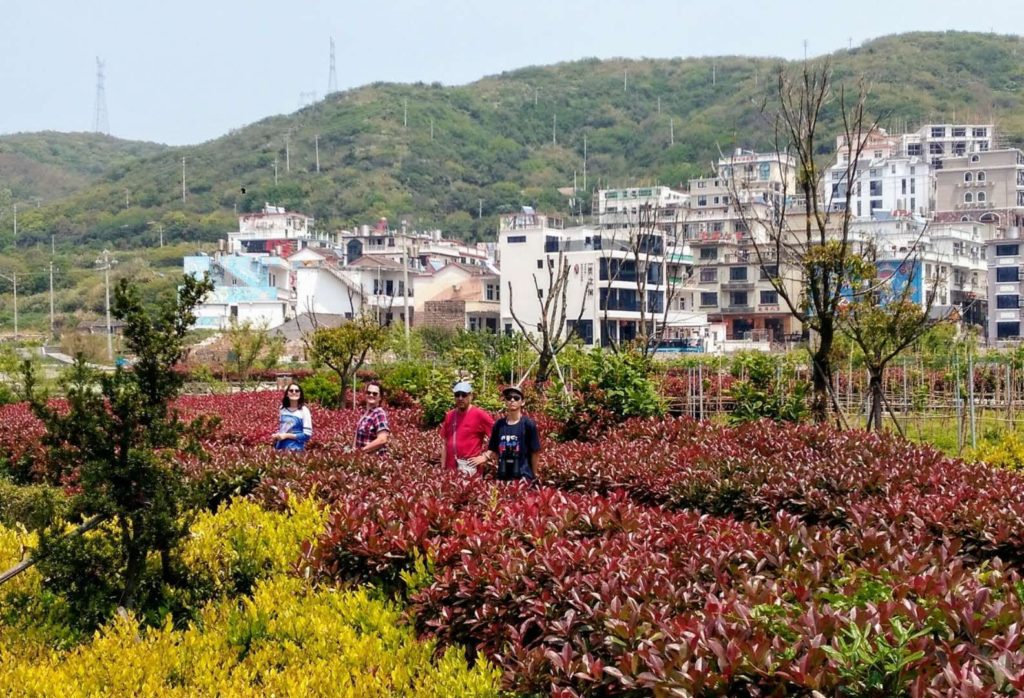
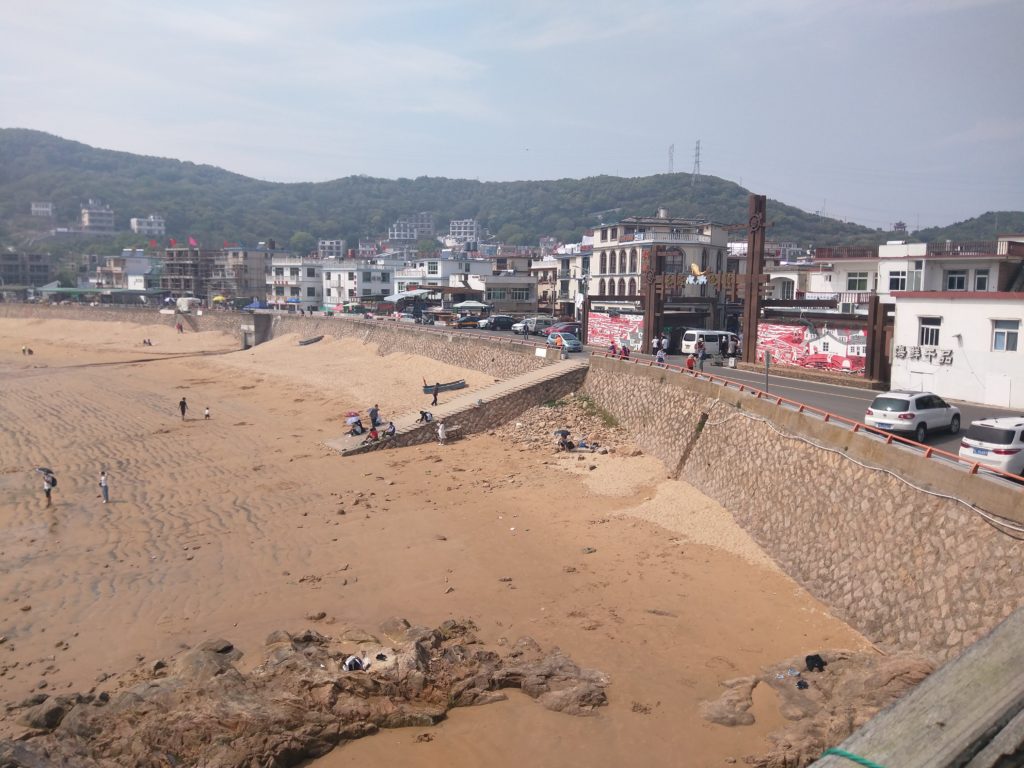
At night the town became animated with people going out to eat crab, fish, and other sea life. Fish tanks filled the restaurants and people seemed to pick their restaurants based on the fish available in the tanks outside. Though the tanks displayed all types of fish – we got the impression that many of them weren’t local. We didn’t see any fishing boats bringing fish in to the docks to sell to the restaurants. Prices were steep for fish we couldn’t name. Despite that, we had several types of fresh fish, fried and cooked in the local style.

On the ferry ride home, the boat deck was crowded with passengers eager for a look at the sunset. The gray, smoggy skies of Shanghai cast their shadow on the horizon and muted the sun. Yet, it was beautiful. I turned to see passengers flick cigarette butts into the water. Someone tossed their water bottle onto the deck to be blown into the ocean and maybe, I thought, end up on the beach we were at earlier.
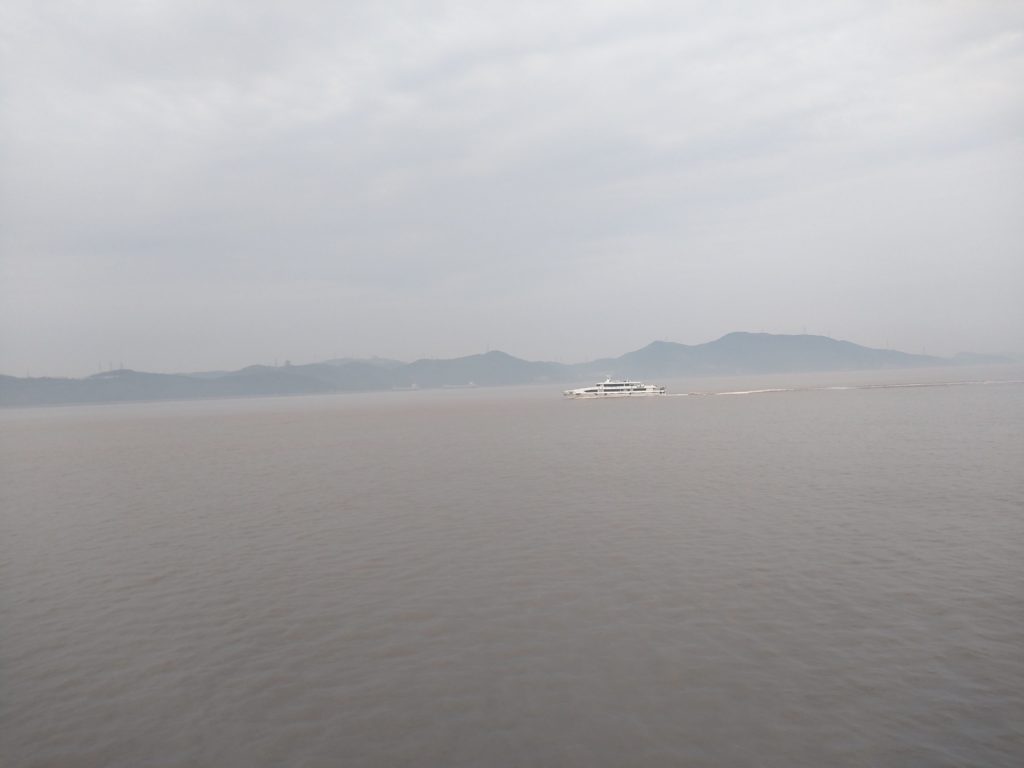

When we moved to Shanghai, we expected a city of 25 million to have trash. China has the world’s largest population at 1.4 billion people. It produces a third of the entire world’s trash output per year. But you barely see a cigarette butt on the streets of Shanghai. Sometimes we place our cardboard boxes outside out apartment building and head upstairs to collect more and by the time we are back the local recycler has ridden by on his bicycle and picked it up. Sweepers are continuously sweeping walkways and the sidewalks with their branch brooms. Someone is always digging through the community and street-side trash bins to fish out recyclable material or other needed items. Trash is moved throughout this city – it doesn’t lay on the streets. Yet surprisingly to us, people are littering. We see families leaving trash on outdoor tables to blow away in the wind, or see a person place a plastic bottle near a flower bush, or even just throw trash directly on the ground. Littering is constant. But in Shanghai at least, it seems there are others to pick it up. I wonder who thinks it is their responsibility to pick up the ocean’s trash?
When you travel you are faced with expectations and reality. The saying “This is China” is meant to help you cope and recognize the cultural differences of this country over your own. We’ve used the phrase to engender acceptance of things that, to our previous understanding, are un-explainable. For many things this phrase helps. But with ocean pollution, must we accept it as just the way it is? Isn’t the contradiction of what we expect and what we get in this case something that forces a choice? For me it is.
For more on our world’s trash problem and its impact on our oceans visit National Geographic’s Planet or Plastic initiative and take the pledge to help prevent plastic waste.